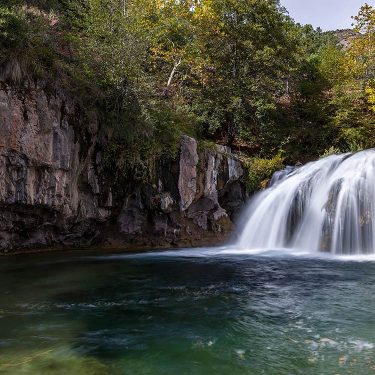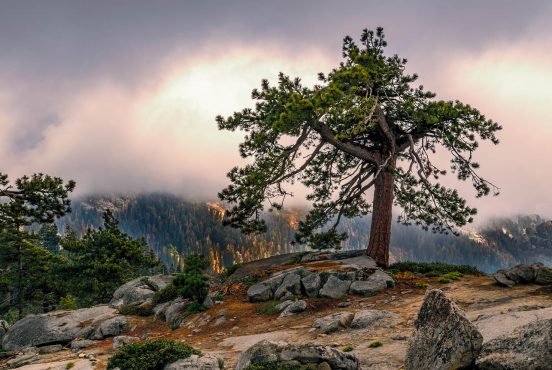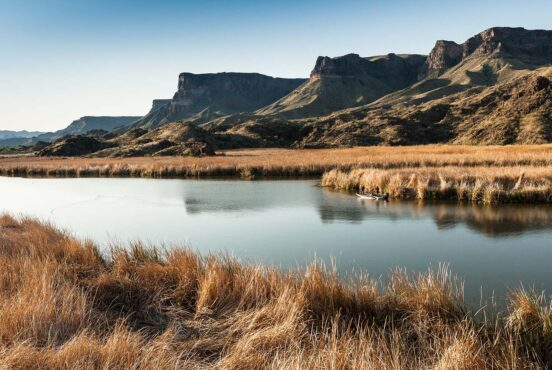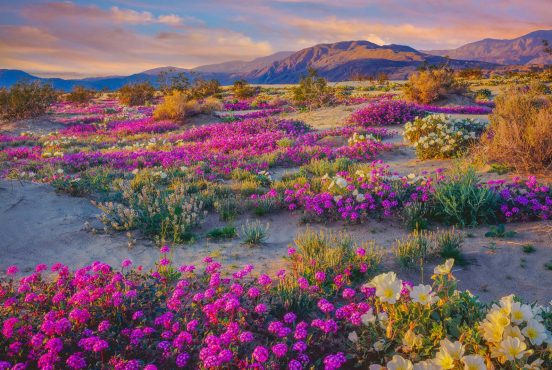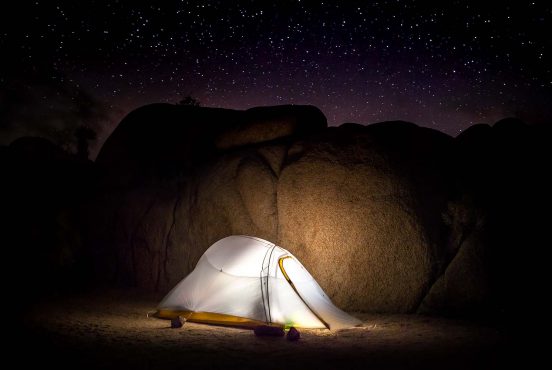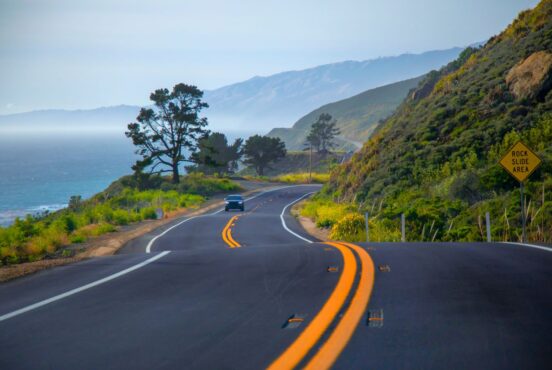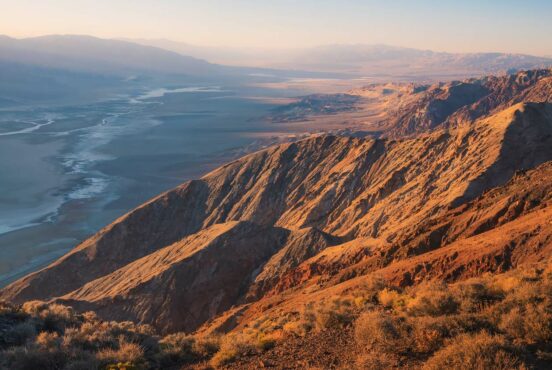Revered for its myriad of tiny granite islets and crystal clear water, Thousand Island Lake is one of the most iconic backpacking destinations in California’s Sierra Nevada Mountains.
A chilly Sierra breeze whips a tangle of hair around my left ear, and with it, I catch a whiff of sagebrush. To my left roaring waterfalls cascade down narrow river valley. To my right? The rocky, glacier-capped façade of Banner Peak looms large above the horizon. This isn’t a dream; it’s merely the blissful nature overload of hiking to one of my favorite spots in all of California: Thousand Island Lake.
As one of the prettiest lakes in the Eastern Sierra and one of the most famous overnight campsites along the Pacific Crest (PCT) and John Muir Trails (JMT), Thousand Island Lake is very popular with locals and tourists alike. The hike to get there is a minimum of 15 high-elevation miles (round trip). You’ll cross streams, traverse sunny, exposed stretches, and trek up and down granite outcroppings.
I’ve been lucky enough to complete this bucket-list-worthy trek twice: on a peak-bagging expedition to summit nearby Banner Peak and again when I thru-hiked the entirety of the JMT. Both times, it was drop-dead gorgeous. I recommend this hike to nearly every strong hiker and experienced backpacker I know.
But before you set off on a long, mountainous trek through the Sierra Nevada, it’s important to know what permits you’ll need, what restrictions are on the trail, and the necessary gear to pack to make sure you return safely and comfortably.

Does Hiking to Thousand Island Lake Require a Permit?
If you are planning to camp overnight (and you definitely should), absolutely. Permits to hike to Thousand Island Lake can be hard to come by, and I strongly recommend trying to reserve yours as soon as the system opens at Recreation.gov. The system can be a bit tricky to sift through at first, so be sure you search for “Inyo National Forest – Wilderness Permits.”
60% of the quota for each trailhead is released 6 months in advance (meaning you’d need to reserve a July camping date in January). The remaining 40% of the permit quota is released 2 weeks in advance.
Don’t forget to factor a possible shuttle, too. This area is highly popular. You’ll need to enter Reds Meadow Road before the shuttle service begins at 7:30am or grab a shuttle ticket from Mammoth Main Lodge. Tickets for the Reds Meadow/Devils Postpile shuttle cost $15 for adults and $7 for children. Pro tip: nearly everyone takes the scenic shuttle ride down to the trailhead, so buckle up and enjoy the ride.

How to Get to Thousand Island Lake
There are three main trailheads to choose from: High Trail, River Trail, or Rush Creek Trail. No matter your selection, you’ll be trekking up and down steep inclines, encountering loose gravel, and hiking across sunny, exposed areas. Also, because the minimum round-trip distance to get to the shoreline of the lake itself is 15 miles, most people complete this hike as an overnight backpacking trip.
Since most people will hike to Thousand Island Lake from Agnew Meadows via either the River Trail or the High Trail, we’ll be primarily focused on these routes in our guide.
After you’ve had a teaser of the fabulous Minaret views to come on the ride, you’ll arrive at Agnew Meadows. From here, you need to follow the trail dictated by your permit (either the River Trail or the High Trail). The River Trail parallels the Middle Fork of the San Joaquin River, steadily climbing past waterfalls and gnarled, ancient Sierra juniper trees until you reach your destination. The High Trail, on the other hand, ascends steeply for roughly 500 feet out of Agnew Meadows. It then follows a gradual slope with sweeping views of the Minaret range all the way to Thousand Island Lake. Both trails cross a variety of streams and water sources, so you won’t have to worry about running out on this hike.

All of the trailheads for this alpine lake sit above 7,000 feet – yowza! The tarn itself is at a lofty altitude of 9,833 feet above sea level. Proper acclimatization is key, so that you don’t experience altitude sickness along the way. We recommend overnighting in Mammoth Lakes the day before your big journey.
Another important consideration to make? This entire area is in an active black bear zone. Store all of your food items, trash, and smellables (like toothpaste and used toilet paper) in a hard-sided bear canister. Using a reusable pee rag like the Kula Cloth helps cut down on toilet paper waste and is worth checking out.
In addition, campfires are prohibited to help preserve this popular site.
How Long is the Hike to Thousand Island Lake?
The short answer? Longer than AllTrails will tell you.
Expect at least 8 miles one-way if you trek along the River Trail. The High Trail clocks you in at around 9 miles one-way. Most hikers forget to factor in that the shuttle drops you off .25 miles from the Agnew Meadows Trailhead. You’ll also need to hike at least .5 miles along the lake (each way) to locate a decent campsite. Or, better yet, make a loop by returning along whichever trail you didn’t reserve a permit for on your hike out the following day.

Traveling to Thousand Island Lake
The nearest town to Thousand Island Lake (and its most popular trailhead, Agnew Meadows) is Mammoth Lakes, located in mountainous central California. If you have the time, we recommend acclimatizing there with any one of the jaw-dropping hikes in the Mammoth region.
On the morning of your trek, park at the Mammoth Mountain Main Lodge. From here, you can catch the Reds Meadow/Devils Postpile shuttle bus down to the Agnew Meadows Trailhead. Look for signs (the area is well-signed) for either the River Trail or the High Trail.
Camping is not allowed within ¼ of a mile from the outflow of Thousand Island Lake. Once you reach the lake’s shoreline, you’ll need to traverse around its northern edge until you find an established campsite. Be sure to follow Leave No Trace Principles and camp on durable surfaces and in established campsites only.

When is the Best Time to Hike to Thousand Island Lake?
Because of the high elevation of the lake and its associated trailheads, hikers can only complete this trek without hardcore mountaineering gear in summer and early fall. Typically, the trail is snow-free by early July. If you’re unsure about the current conditions, contact the nearest ranger station and ask.
July and August are the most popular months to undertake this trek. In the summertime, days will be warm and sunny, with the occasional afternoon thunderstorm. Evenings cool off as soon as the sun goes down, and campers should expect nighttime temperatures in the 40s.
In the fall, it’s important to check the air quality conditions, to see if nearby wildfires will impact your hike. If there’s nothing smoky in the forecast, autumn can be an absolutely wonderful time to hike to Thousand Island Lake. The trail is less crowded with thru-hikers, and the days are cooler. However, if you plan to tackle this trip in September or October, I’ve got a tip for you. Pack a sleeping bag that’s rated at least 10 degrees warmer than the coldest night’s forecast. I don’t care how much you idolize Conrad Anker — no one wants to end up shivering all night on their weekend escape.

